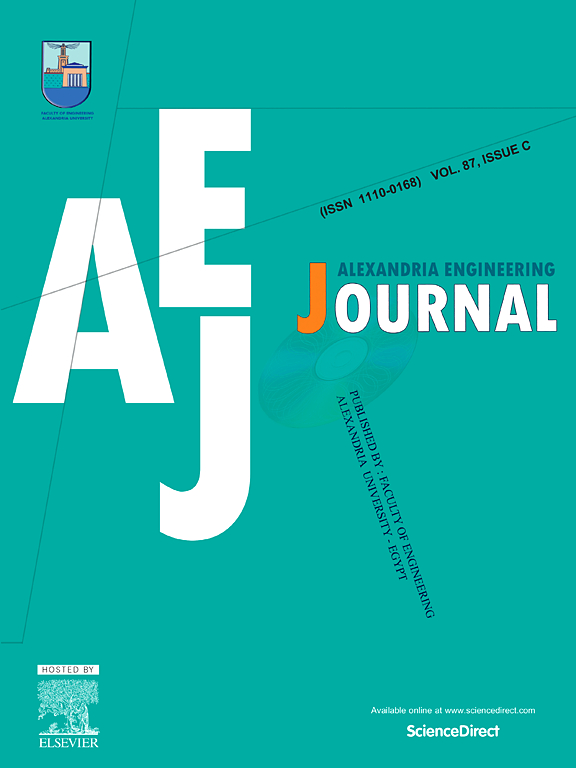Grooved single-channel dual media tank thermal energy storage systems to improve overall thermal performance: Numerical analysis
IF 6.2
2区 工程技术
Q1 ENGINEERING, MULTIDISCIPLINARY
引用次数: 0
Abstract
In this study, a numerical analysis of a single-channel structured dual media tank thermal energy storage (TES) system is done to investigate the effect of grooves on thermo-hydraulic performance. Due to computational complexity, a single channel is considered, and results are validated by the numerical results of other studies. The study encompasses the analysis of unsteady temperature distribution, heat transfer coefficient, and friction factor by varying the groove size ratio with the diameter of the pebbles. The φ ratio (grooves diameter/pebbles diameter) is varied from 3.15 to 4.73, and the effect of the Re for different widths of the channel is studied. The numerical result reveals a 50 % increase in heat transfer coefficient when φ is varied from 3.15 to 4.73 at a Reynolds number of 22.4. Similarly, a small variation in the frictional factor can be observed. amounts to 22 % while keeping a Reynolds number of 22.4 and a diameter ratio (φ) ranging from 3.15 to 4.73. Furthermore, research is done on how Reynolds number affects volumetric heat transfer (ℎv). The results indicate a 31 % decrease in ℎv at φ = 3.15. on the other hand, a larger value of φ is observed to result in a lesser drop in ℎv. Additionally, the computation performance improvement factor (PEF) shows greater values for φ = 3.15, indicating that the ideal groove diameter to achieve maximum heat transfer rate and minimum pressure drop is smaller.
求助全文
约1分钟内获得全文
求助全文
来源期刊

alexandria engineering journal
Engineering-General Engineering
CiteScore
11.20
自引率
4.40%
发文量
1015
审稿时长
43 days
期刊介绍:
Alexandria Engineering Journal is an international journal devoted to publishing high quality papers in the field of engineering and applied science. Alexandria Engineering Journal is cited in the Engineering Information Services (EIS) and the Chemical Abstracts (CA). The papers published in Alexandria Engineering Journal are grouped into five sections, according to the following classification:
• Mechanical, Production, Marine and Textile Engineering
• Electrical Engineering, Computer Science and Nuclear Engineering
• Civil and Architecture Engineering
• Chemical Engineering and Applied Sciences
• Environmental Engineering
 求助内容:
求助内容: 应助结果提醒方式:
应助结果提醒方式:


